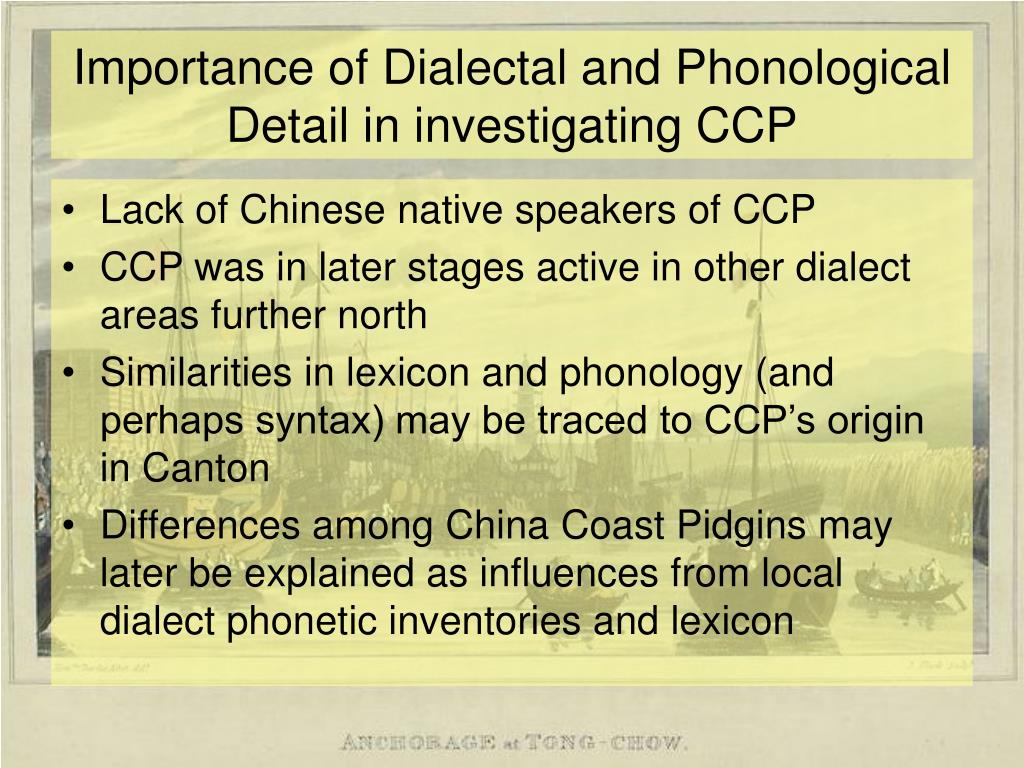

Population: 2,000 Work with GRN on this languageĪre you passionate about Jesus and communicating the Christian gospel to those who have never heard the Bible message in their heart language? Are you a mother tongue speaker of this language or do you know someone who is? Would you like to help us by researching or providing information about this language, or help us find someone who can help us translate or record it? Would you like to sponsor recordings in this or any other language? If so, please Contact the GRN Language Hotline. Virgin Islands English Creole (ISO Language).Chinese Pidgin English was a lingua franca that originated in the 17th century. Chinglish contrasts with some related terms. Vincentian English Creole (ISO Language) Chinglish commonly refers to a mixture of English with Modern Standard Mandarin, but it occasionally refers to mixtures with Cantonese, Shanghainese and Taiwanese Hokkien.Turks and Caicos English Creole (ISO Language).

Trinidadian English Creole (ISO Language).Tobagonian English Creole (ISO Language).

Nicaragua English Creole (ISO Language).Leeward Caribbean English Creole (ISO Language).Although some scholars speculate that Chinese Pidgin English may be based on an earlier Portuguese pidgin used in Macao from the late 16th century (as evidenced by certain words seemingly derived from. In 1862 the six volume work by the great Chinese linguist Tong King-sing (1832. Grenadian English Creole (ISO Language) Chinese Pidgin English, a modified form of English used as a trade language between the British and the Chinese, first in Canton, China, and later in other Chinese trade centres (e.g., Shanghai). Chinese Pidgin English became really popular from the 1720s to the 1860s.Equatorial Guinean Pidgin (ISO Language).Nauru Languages related to Chinese Pidgin English Melanesian-Chinese Mixed Pidgin English Where Chinese Pidgin English is spoken Author(s): Ioana Miron Subject(s): Language studies, Language and Literature. We do not currently have any recordings available in this language. Reconstructing Chinese Pidgin English phonology on the basis of written sources. Rogrio Miguel PugaIn the eighteenth and nineteenth centuries, the Anglophone community in Macau and Canton used Chinese Pidgin English (CPE) to communicate. However, this approach is warranted by the so-called “uniformitarianprinciple” (Labov 1972), which posits that current patterns are similar to those thatoperated in the past.Audio recordings available in Chinese Pidgin English Such a comparison is certainly not the perfect equivalent ofRickford’s (1986) “feedback from current usage”, given that Chinese Pidgin English is nolonger spoken. 2010) and with the L2 phonology ofChinese learners of English. In addition, acomparison will be made with other contemporary records of Chinese Pidgin English, withthe phonology of Hong Kong English (Setter et al. In line with the principle of sociolinguisticaccountability, all tokens in the samples of Chinese Pidgin English are included in theanalysis as well as all the contexts where they might have appeared. Reconstructing thephonology of Chinese Pidgin English on the basis of the orthography used in these sourcesraises the issues of the reliability of the sources and of the methodological implications.These are addressed in light of the caveats formulated by Mühlhäusler (1997), Baker andWiner (1999), Avram (2000), among others. in The Chinese Repository), literary works, travelogues, and letters. Since Chinese Pidgin Englishis an extinct variety, the only available sources are written records such as magazine articles(e.g. Summary/Abstract: This paper is an attempt at outlining the phonology of Chinese Pidgin English, including itssyllable structure, with an emphasis on the onset and the coda. Published by: Editura Universitatii Transilvania din Brasov Keywords: Chinese Pidgin English records phonology Subject(s): Language studies, Language and Literature Studies Reconstructing Chinese Pidgin English phonology on the basis of written sources Author(s): Ioana Miron

Reconstructing Chinese Pidgin English phonology on the basis of written sources


 0 kommentar(er)
0 kommentar(er)
